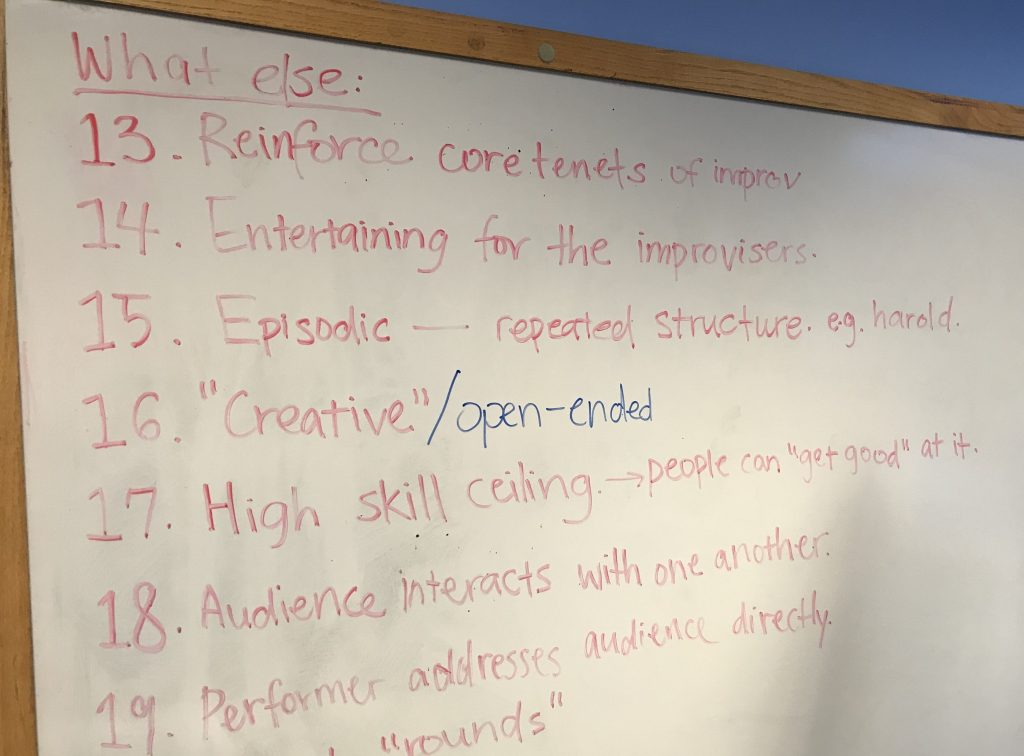What We Did This Week
This week was primarily prep for our first playtest where we had other people relying on us. We polished off our gold spikes and managed to hire actors to realize the three games we intended to run through on Sunday.
In terms of tech, we fully connected a chat scraper with Twitch extension visualization. Generally, this means we can read any chat message and get it to whoever or whatever screen element will need it to have it displayed over the video feed. A variation of this will be used for our most basic playtest of Freeze Tag. Randomly selected audience suggestions will be voted on throughout a performance, dynamically changing what the actors will be doing. For example, the audience will be able to click to vote on four options during a scene. The winning vote will determine the next scene.
The second game we plan on testing is a TSA Game. Audience members submit drawings of the contents of a traveller’s bag. One performer as a TSA Agent will interrogate the traveller as they try to justify increasingly random and out-of-context security X-Rays. Our barebones model will have audience members drawing on their own computers and submitting image files to a Google Drive folder for us to manually pull into the scene, but if the playtest goes well we hope to explore better image submission methods with less friction.
We experimented with a green screen for the TSA game, as it would be an easy way to get everyone on the same page about what image was being talked about, instead of a client side image updating at different times than the actors’. For our Sunday playtest, we’re settling on a second monitor over a green screen until we get our game flow down, but still this is an interesting lead.
Something we didn’t consider with the green screen is the potential for it to provide immediate context. Improv games generally build their scenes and characters up from nothing over time, and it can be confusing to jump in the middle. While we are trying to minimize our focus on literal exposition, games that feature immediate, visual context narrowers like scene backdrops or specific video overlays seem like a good way to handle Twitch audience drop-ins and drop-outs. This is still an idea in progress, but a method we’d like to pursue.
Our third game we intended to explore was Parasocial Activity, explained in a previous blog. We’re uncertain that we’d be able to test it properly this Sunday, and will push it back until it’s in a playable state.
With that, we’ll report back how all of this goes after our playtest. It’ll be exciting to work with real actors finally, especially after all the hard work getting interfaces and usability up to par for them. Their insight will most likely greatly influence our project going forward. For next week, we have halves coming up fast, but we hope to use it as a good time to set our thoughts out more clearly. We’ve brainstormed future games with more nuanced questions behind them for next week as well, so we’ll see how this all goes.


